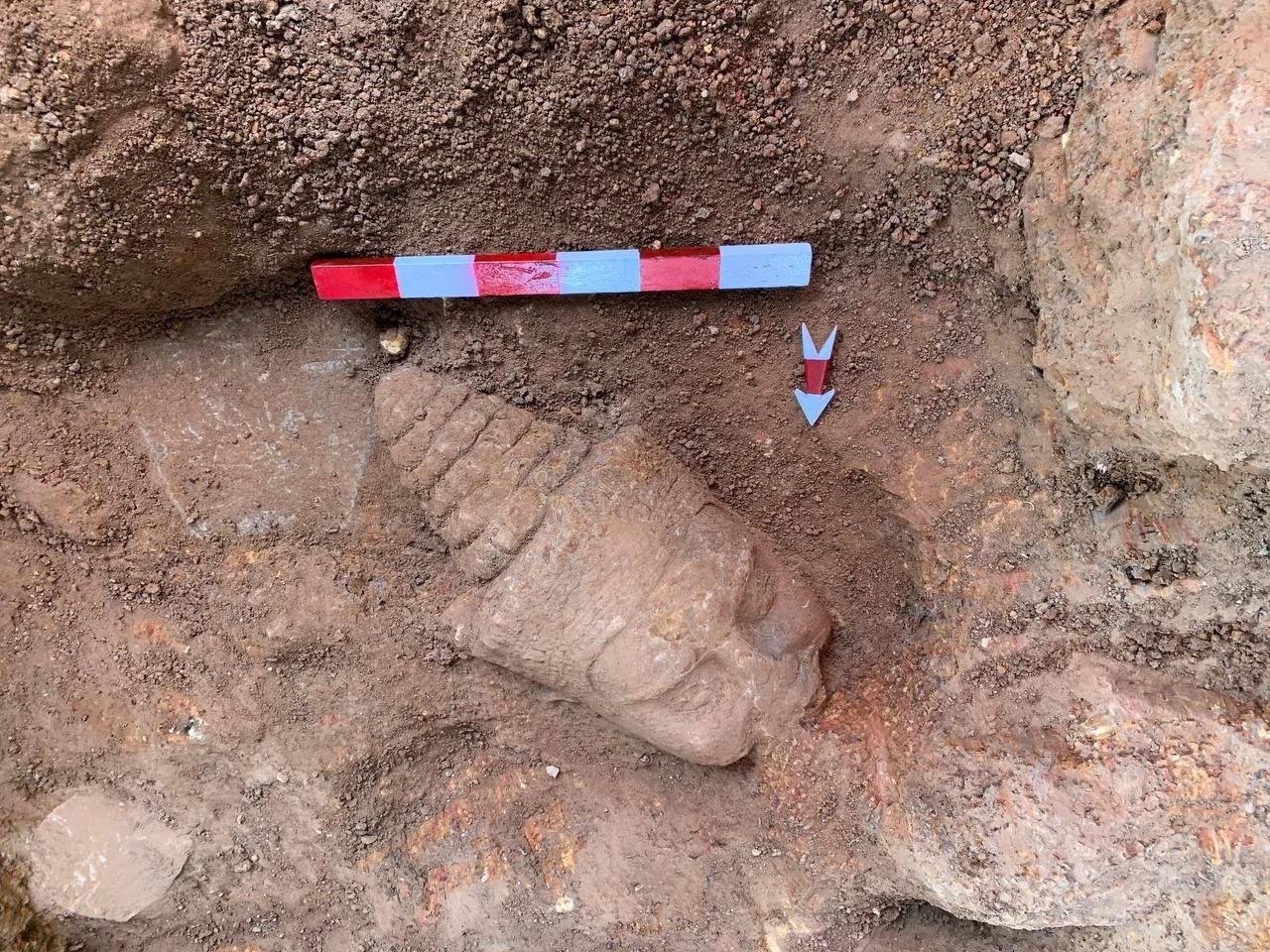Archaeologists from Cambodia’s national heritage authority, APSARA, have uncovered the long-lost head of a Deva statue from the Victory Gate of Angkor Thom.
 Head of a Deva statue. Credit: APSARA National Authority
Head of a Deva statue. Credit: APSARA National Authority
Dating back to the late 12th century and founded by King Jayavarman VII, Angkor Thom represents a pinnacle of Khmer architectural and cultural achievement. King Jayavarman VII’s reign is revered for its advancements in Buddhism and the establishment of a welfare state, alongside ambitious construction projects that included the grand city of Angkor Thom.
During the dig, archaeologists unearthed a well-preserved sandstone sculpture, revealing the long-lost head of a Deva statue that once adorned the Victory Gate. The head, belonging to the 23rd Deva statue, was found relatively intact, and measuring 20 centimeters long and 11 centimeters wide.
The Victory Gate holds symbolic importance, serving as a monumental entryway flanked by statues depicting devas and asuras, representing the Hindu myth of the Churning of the Ocean of Milk. This mythological imagery, combined with the historical significance of Angkor Thom as the heart of the Khmer Empire, underscores the cultural depth and complexity of the site.
Excavations at the Victory Gate are part of a broader restoration project led by APSARA to ensure the long-term stability and preservation of Angkor Thom. According to archaeologists, the head of the Deva statue is relatively intact, despite missing its nose and upper lip.
An Sopheap, the leader of the archaeological excavation team, said: “The discovery of the Deva statue head adds to the rich archaeological heritage of Angkor Thom and provides valuable insights into the history and craftsmanship of the ancient Khmer civilization.”
Angkor Thom’s importance transcends its archaeological significance, as it is part of the Angkor Archaeological Park, a UNESCO-listed World Heritage Site that draws in hundreds of thousands of international visitors annually.





